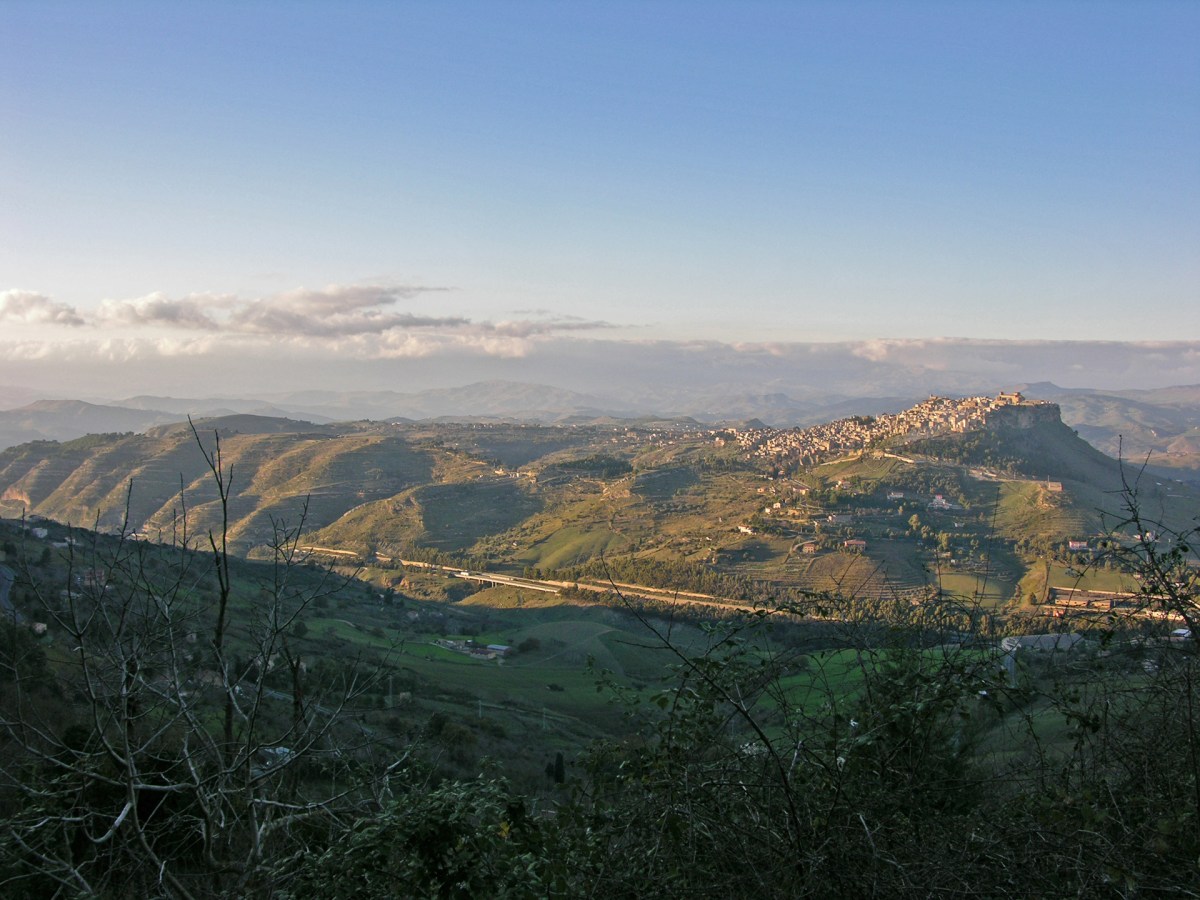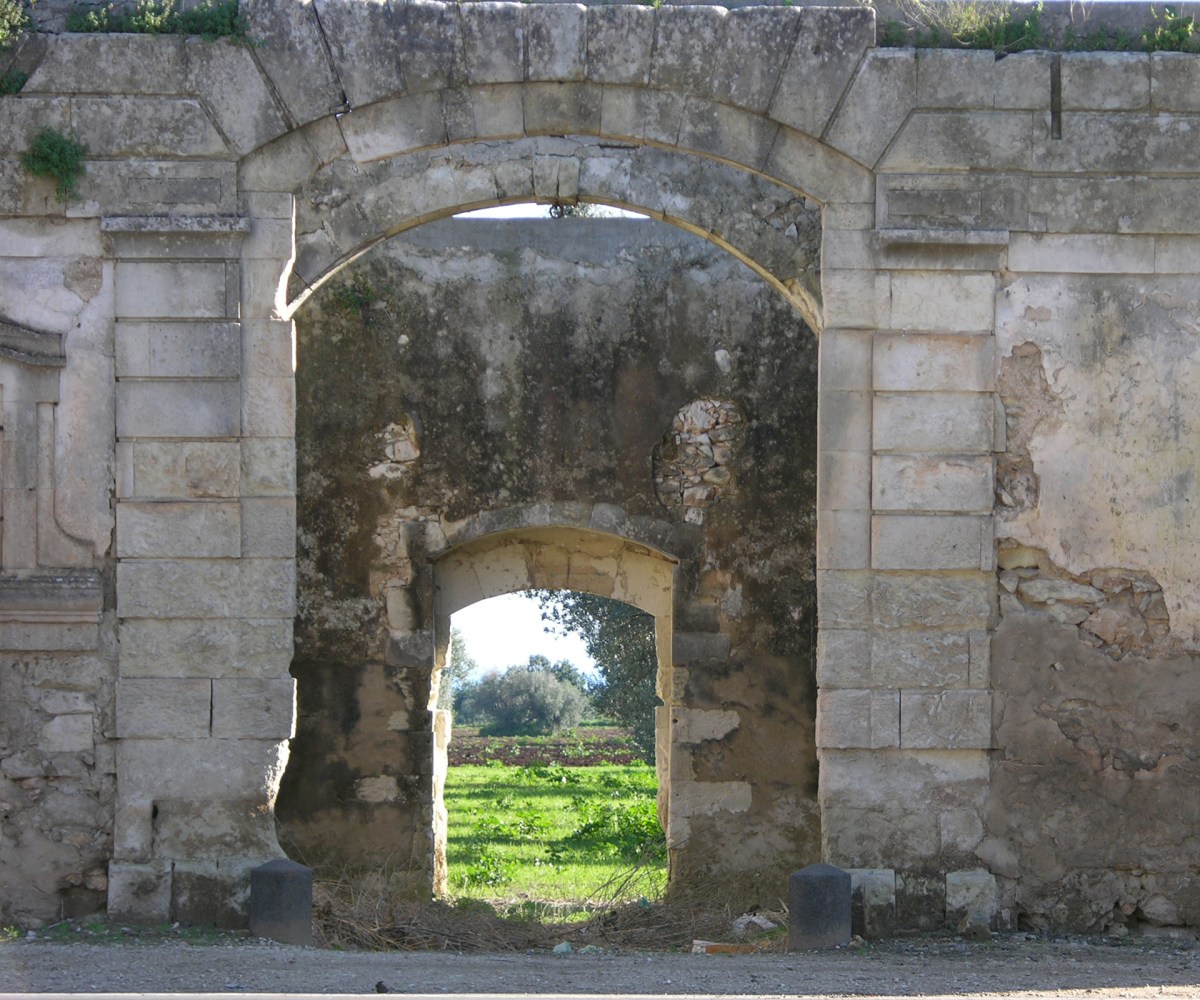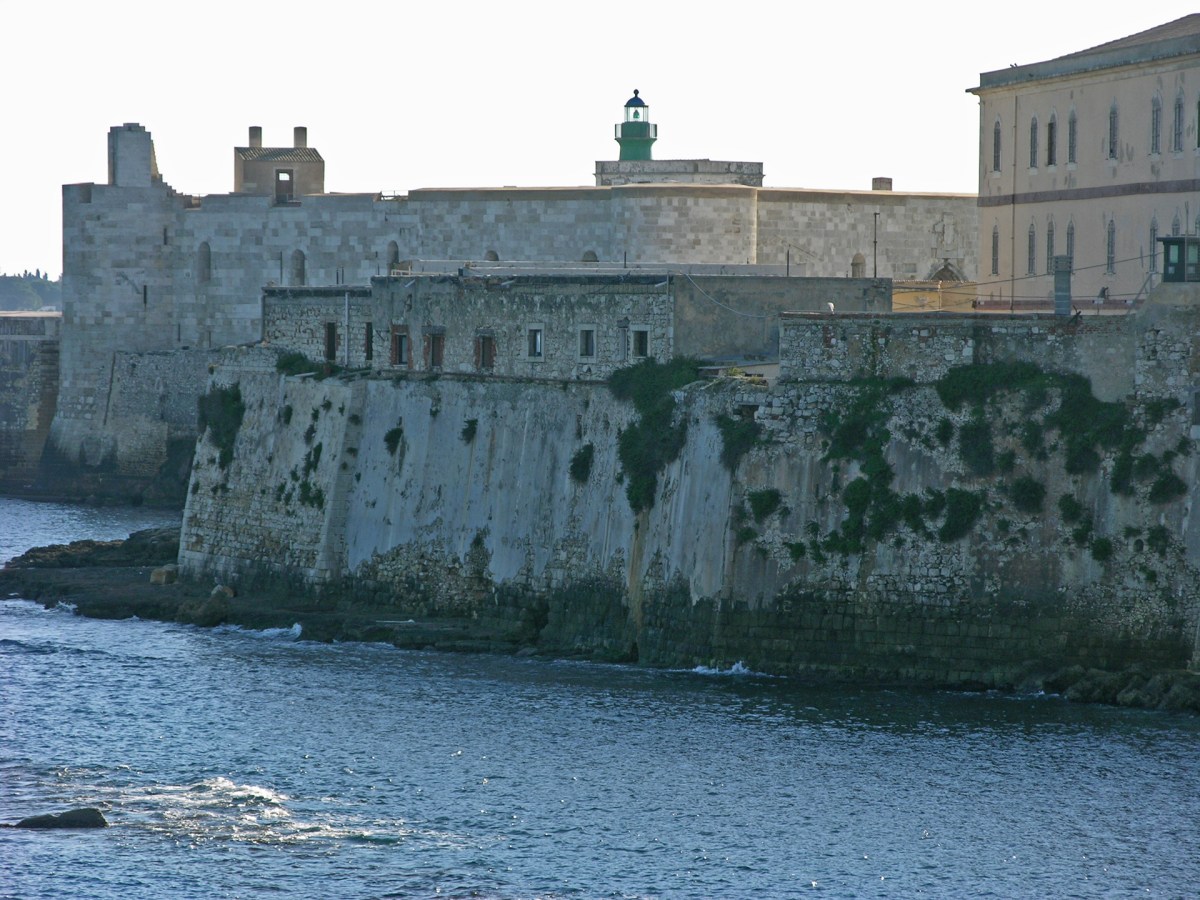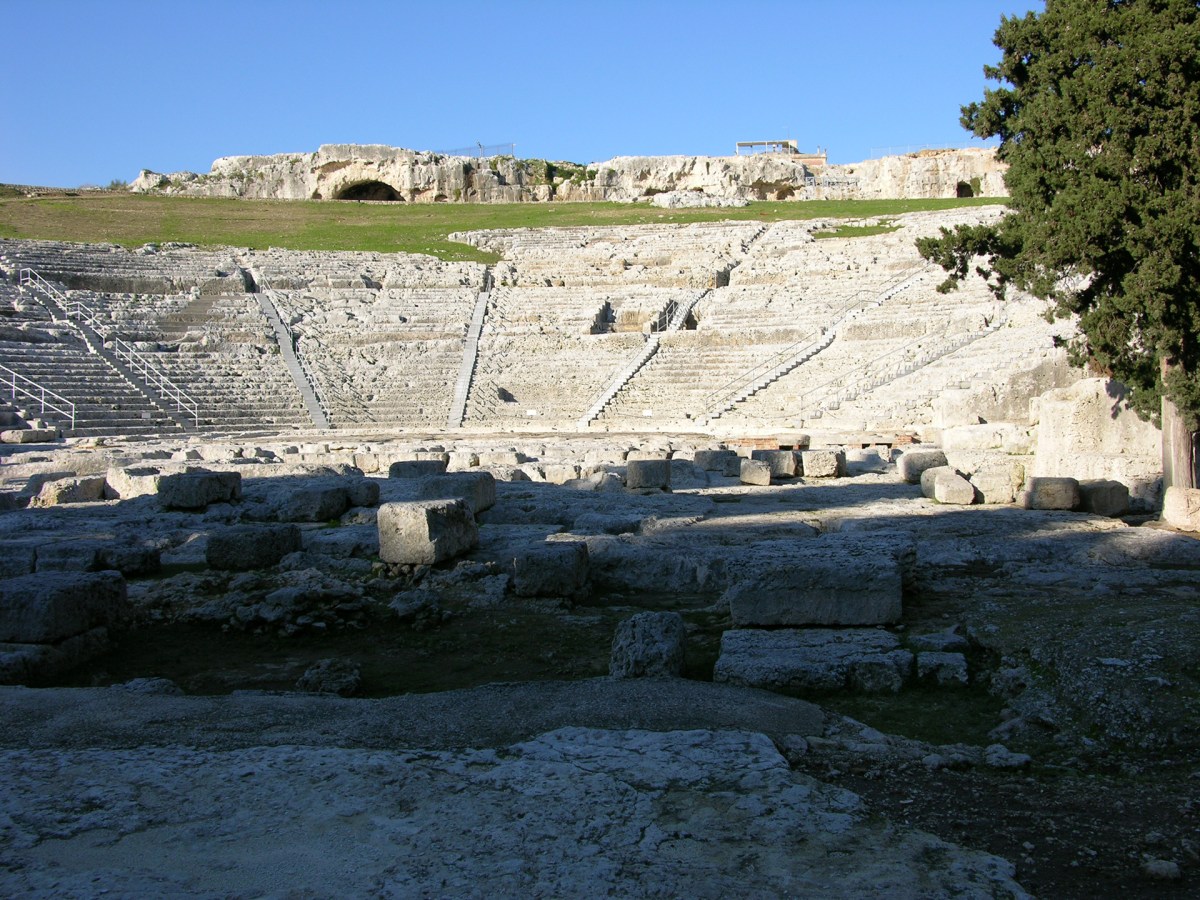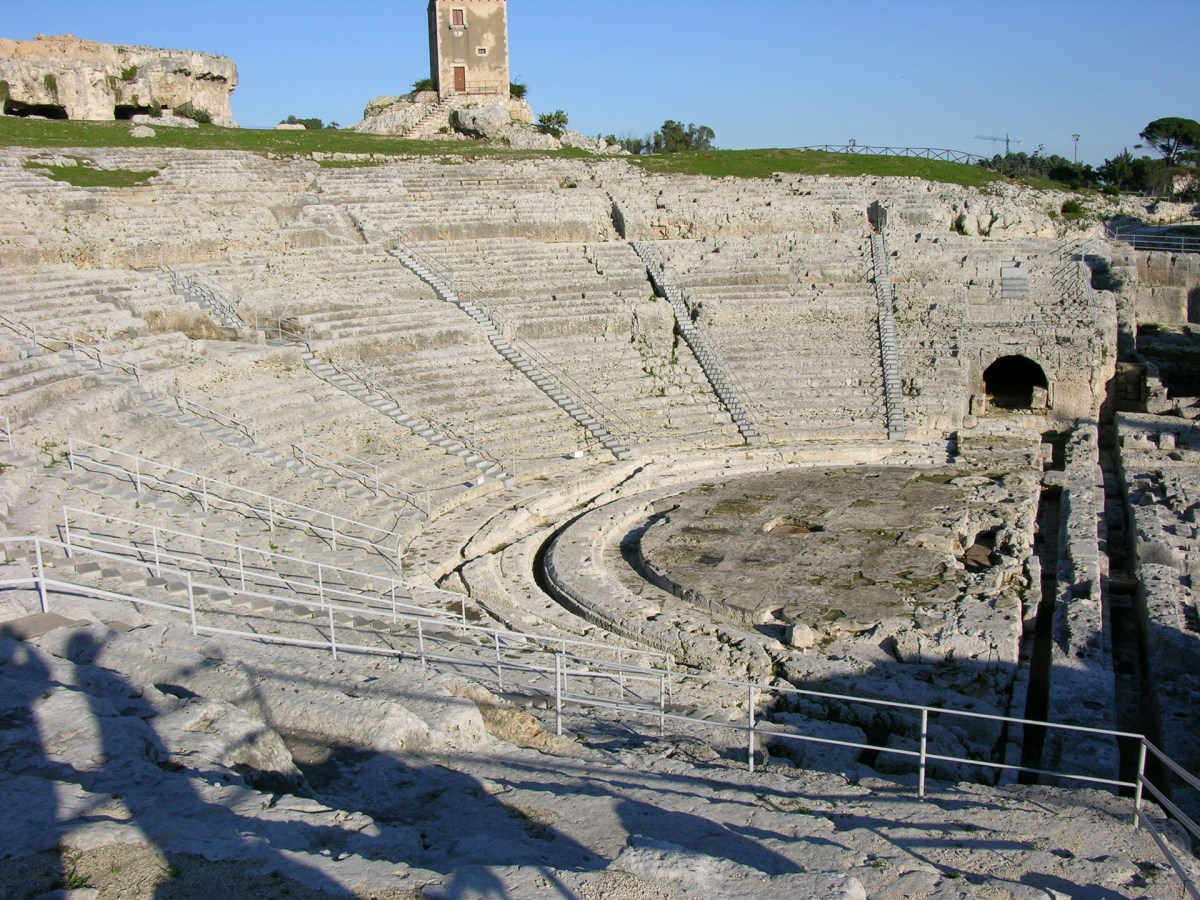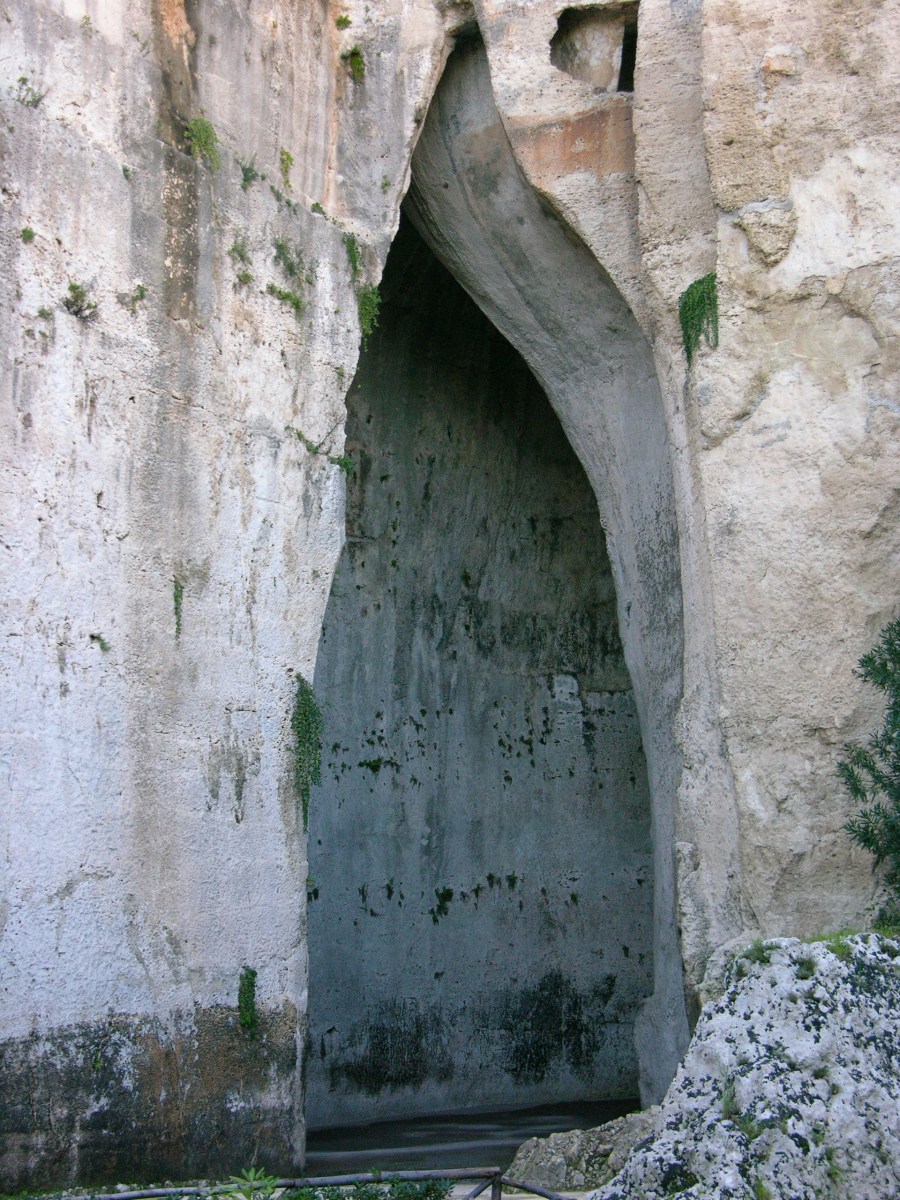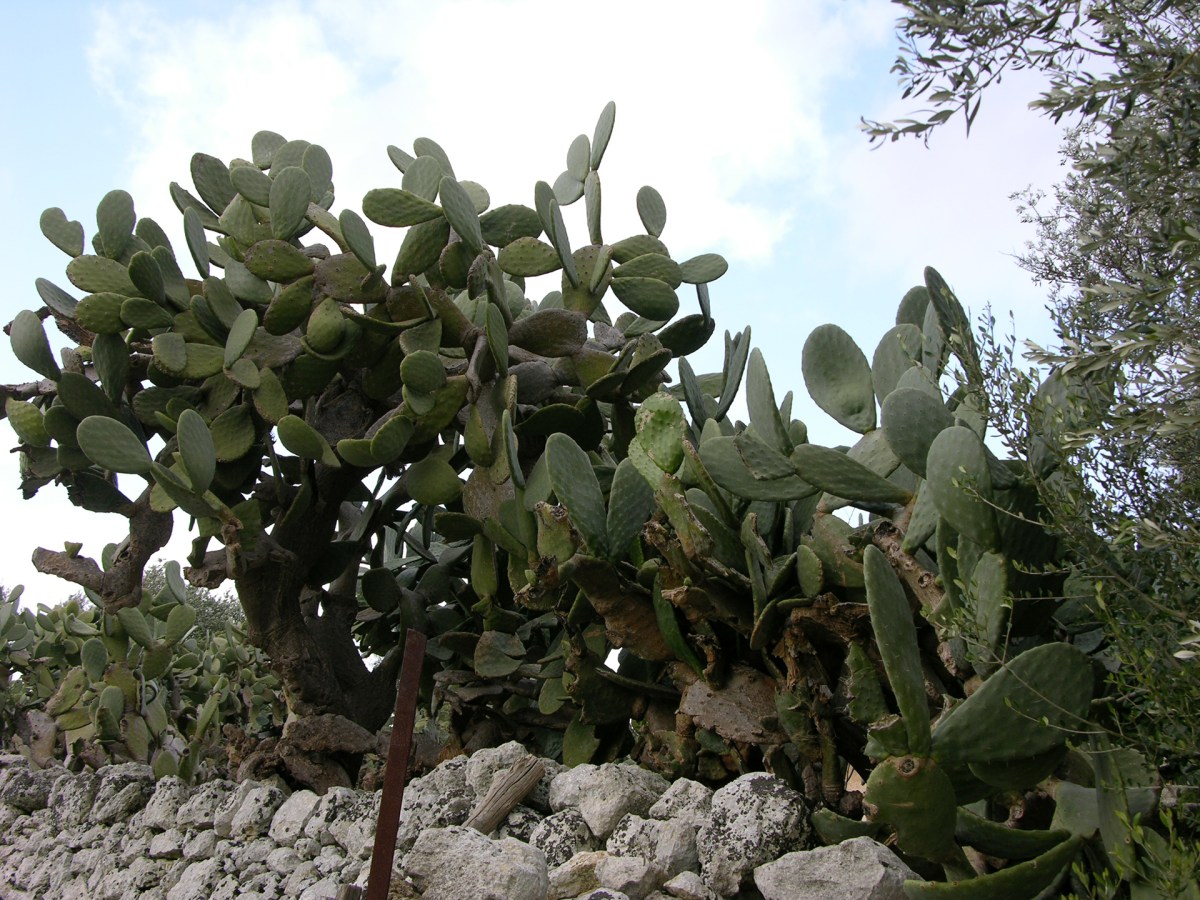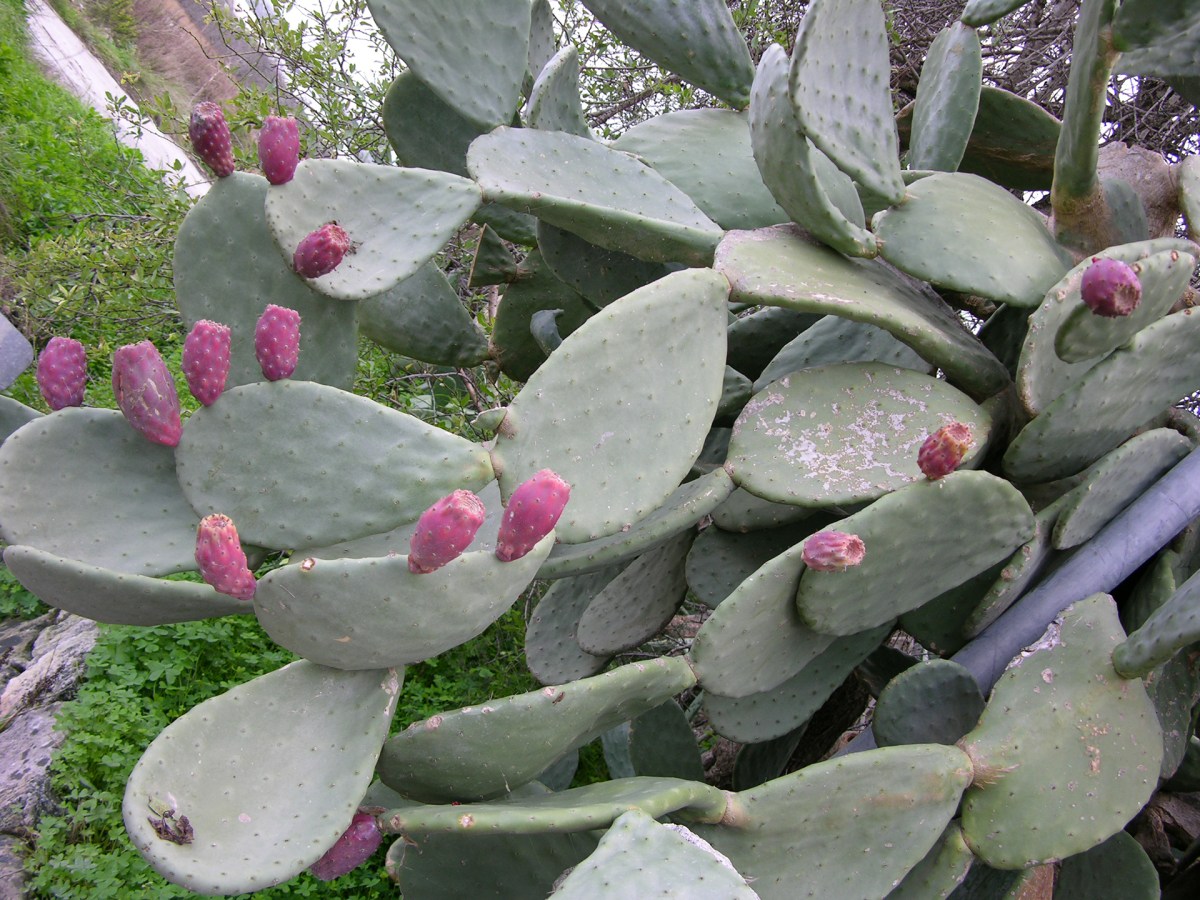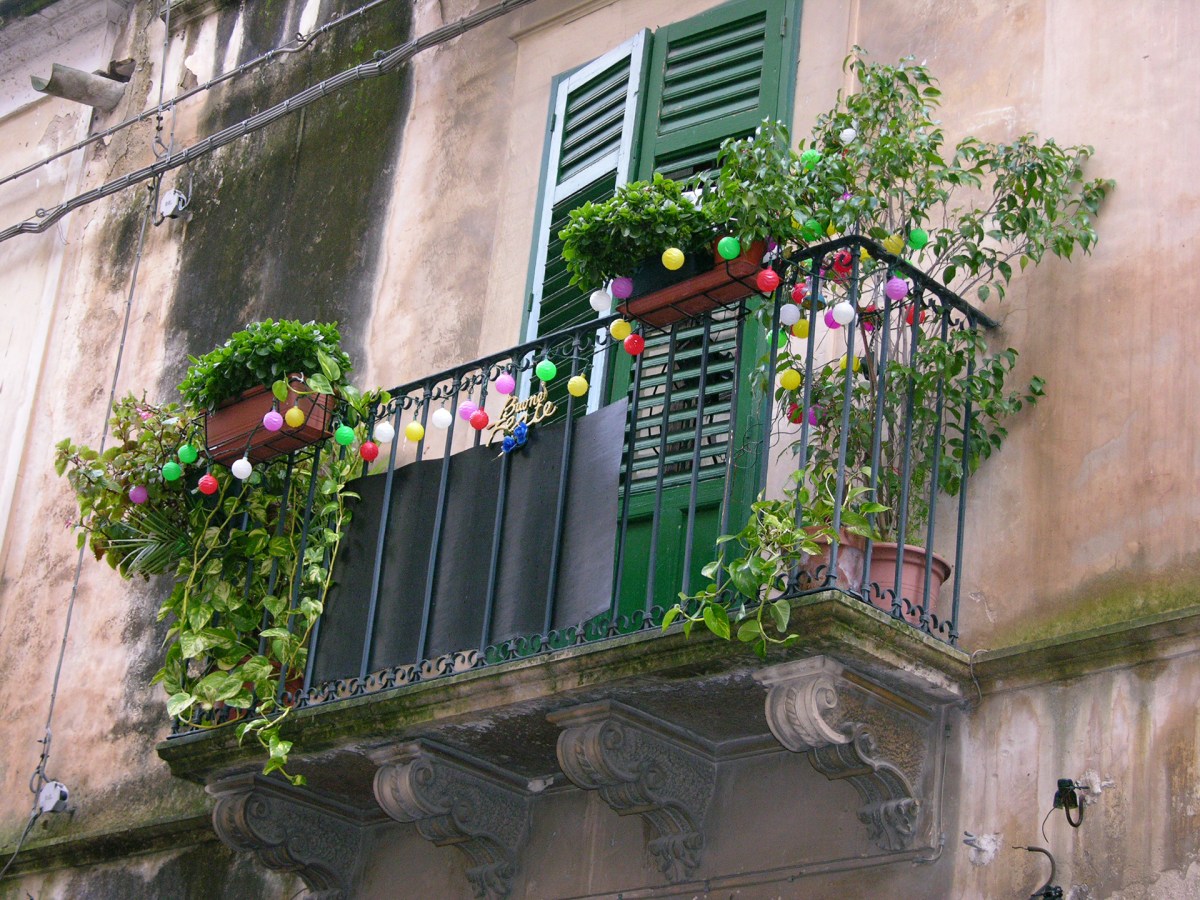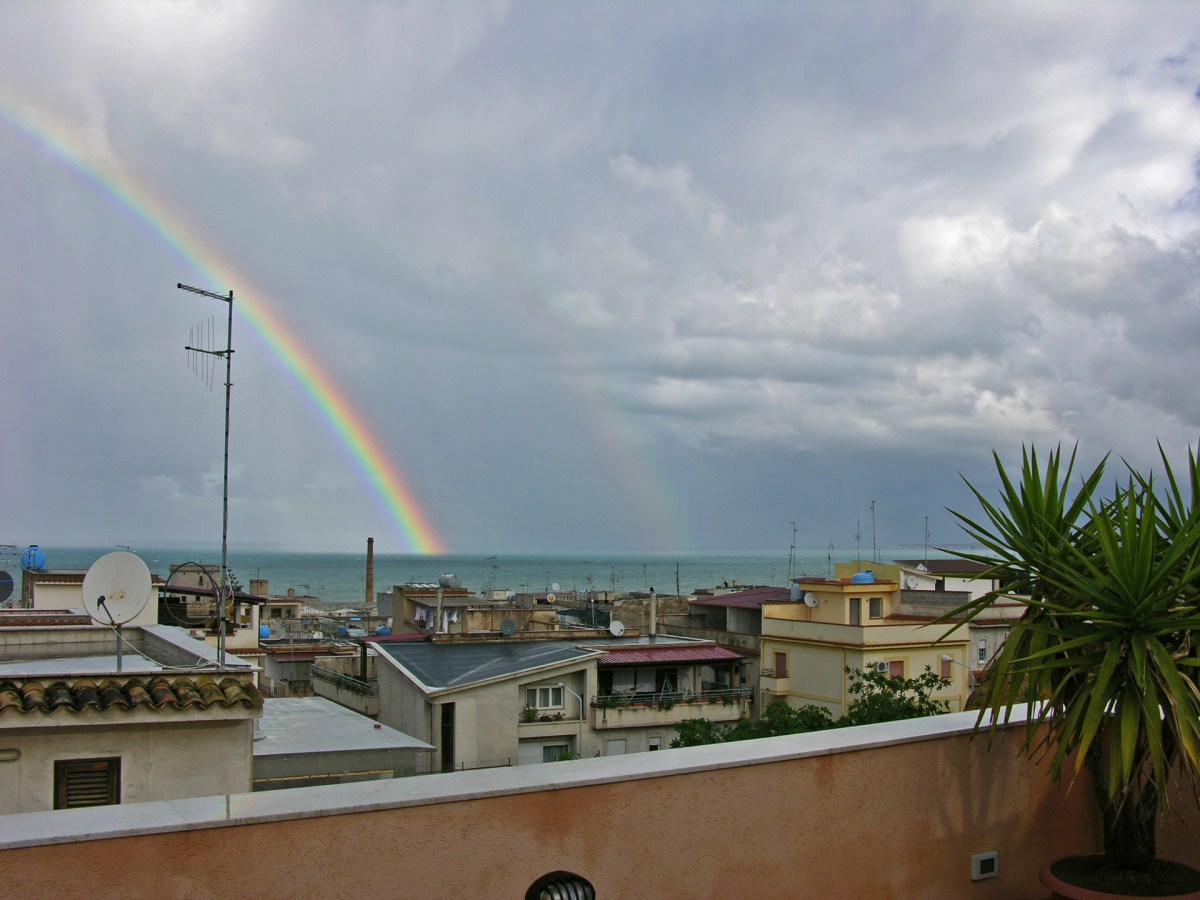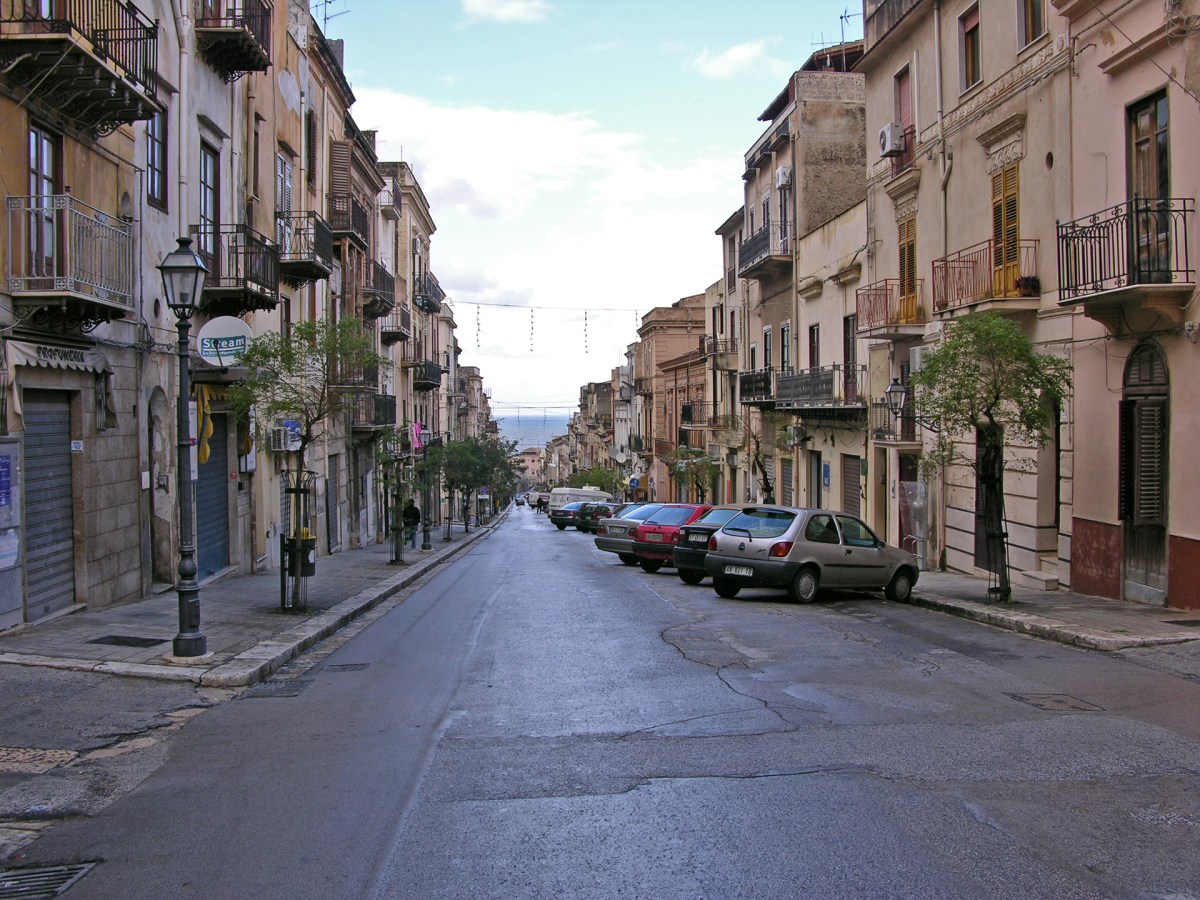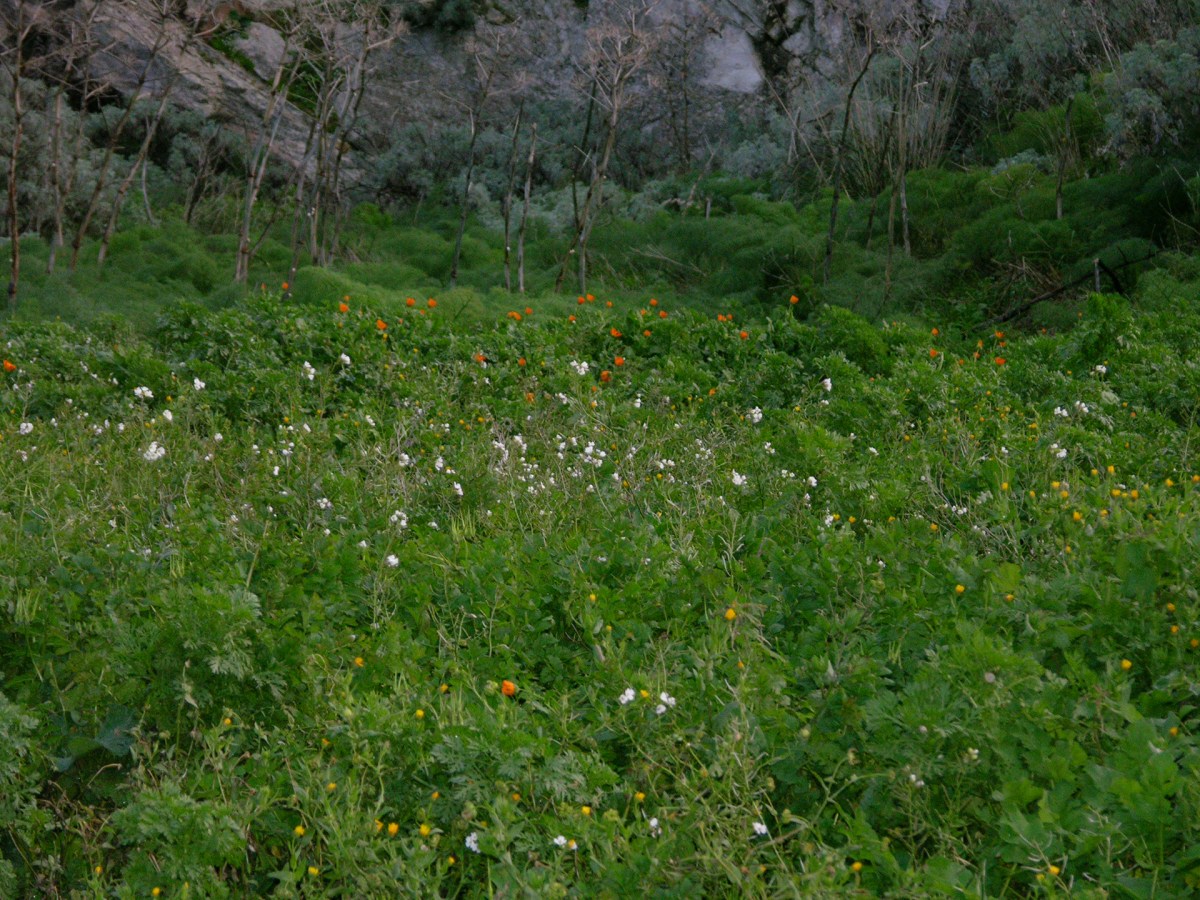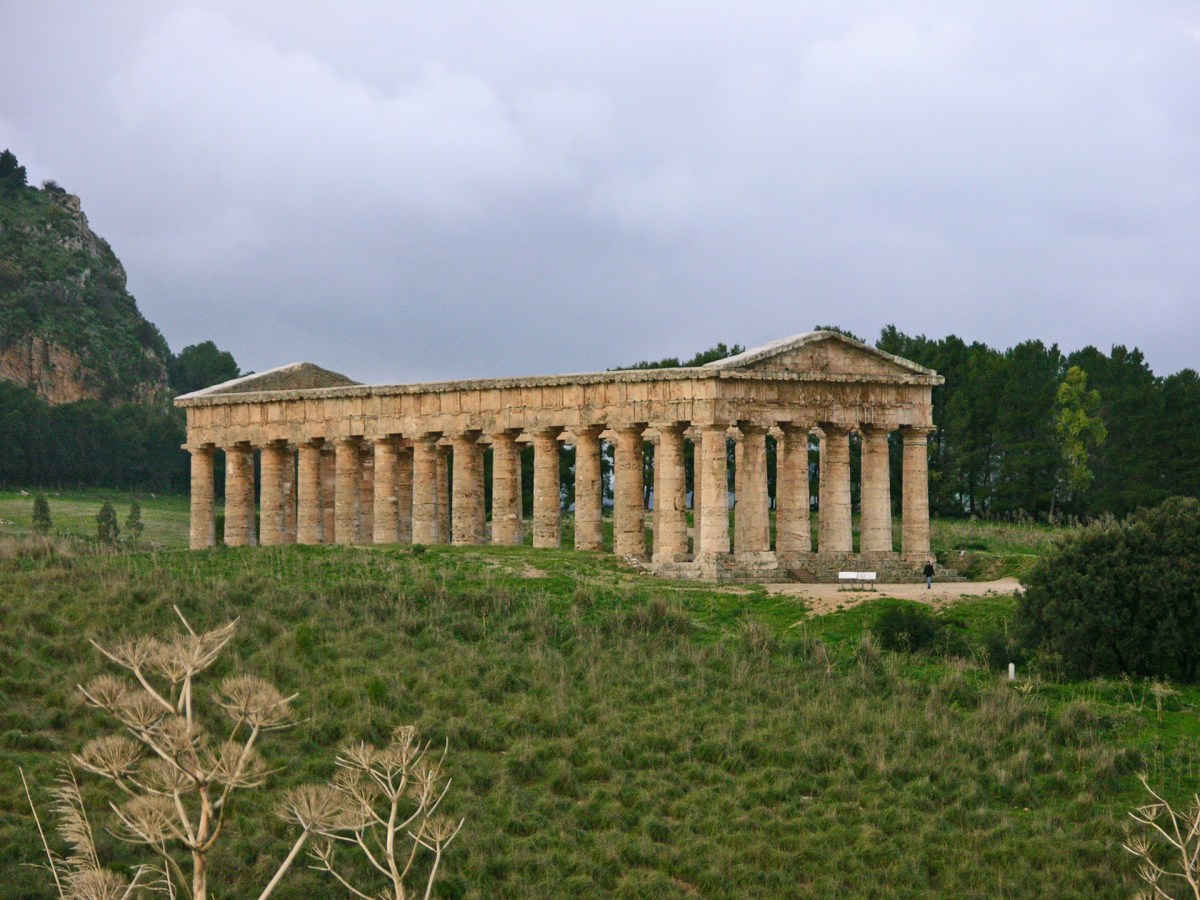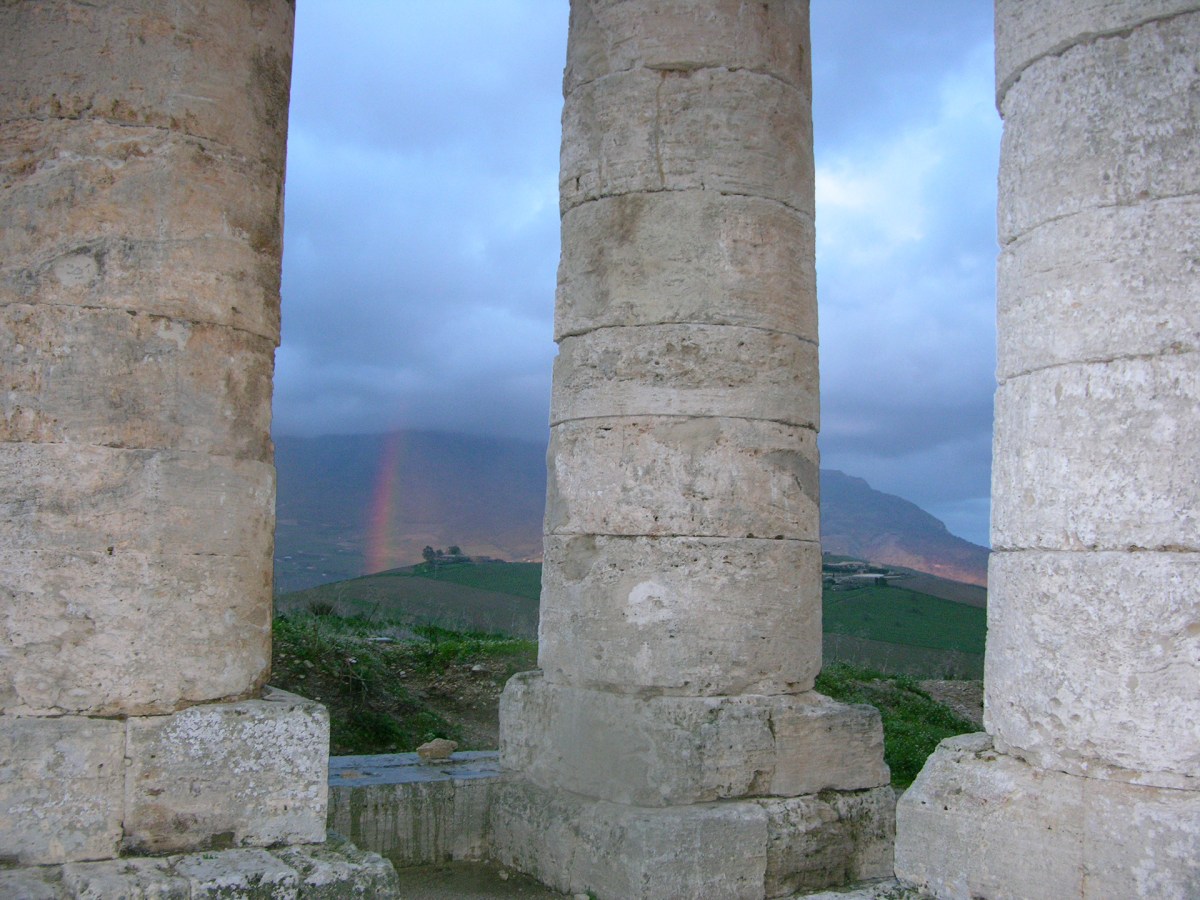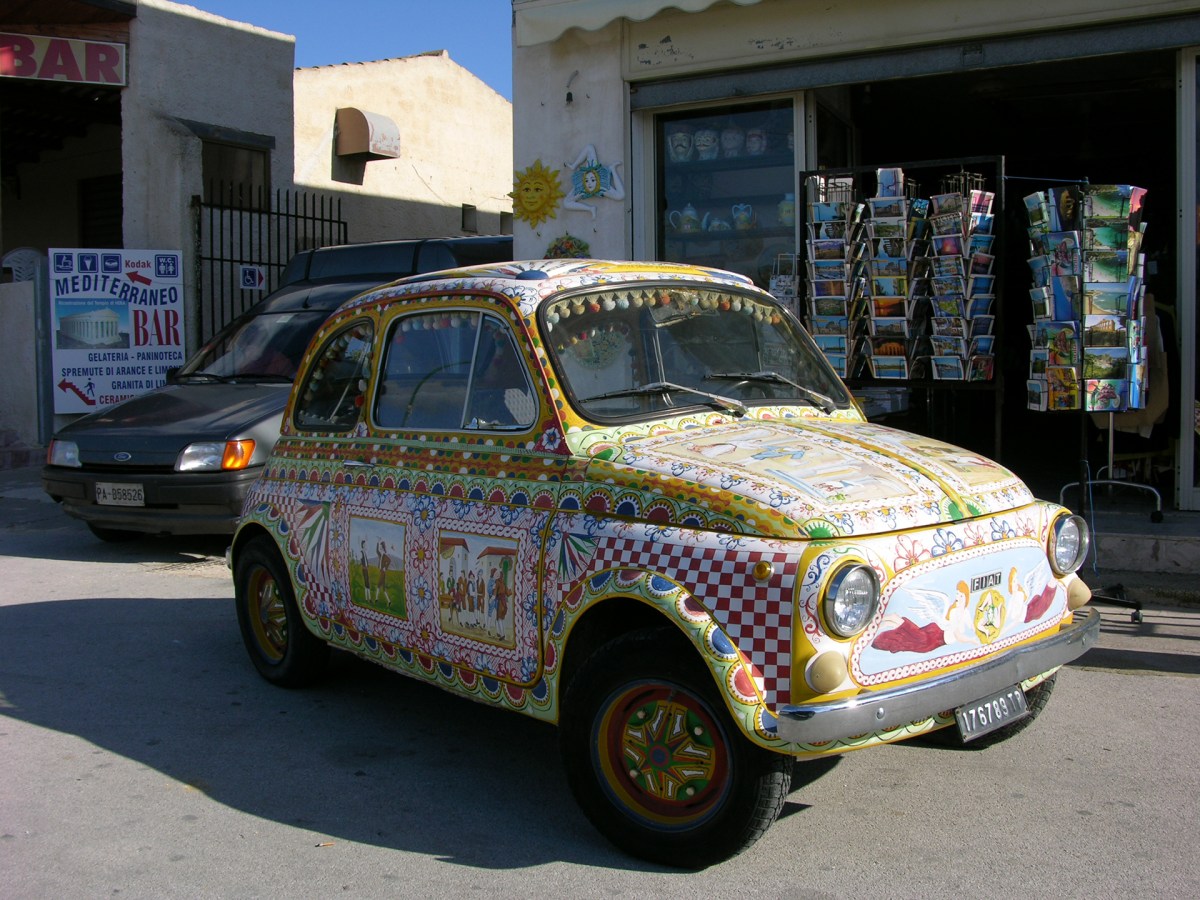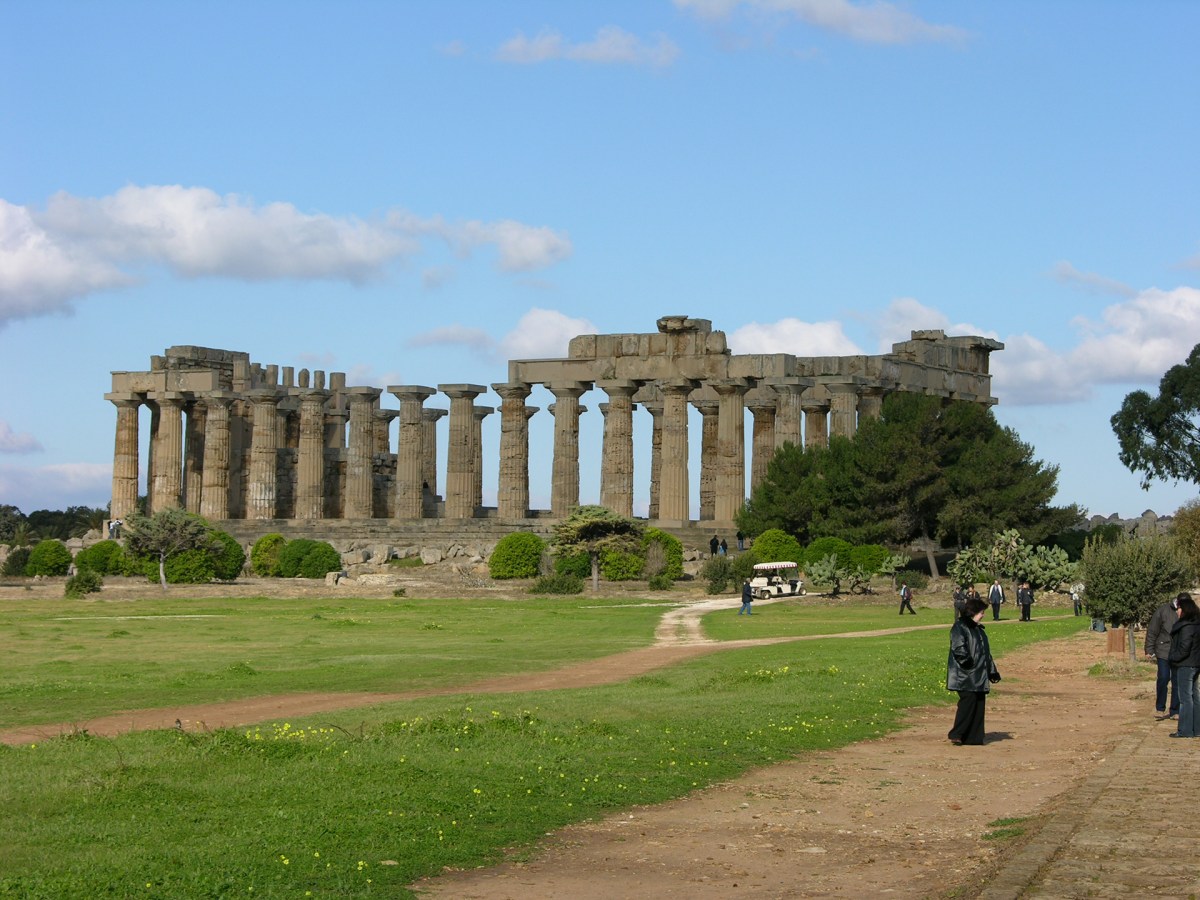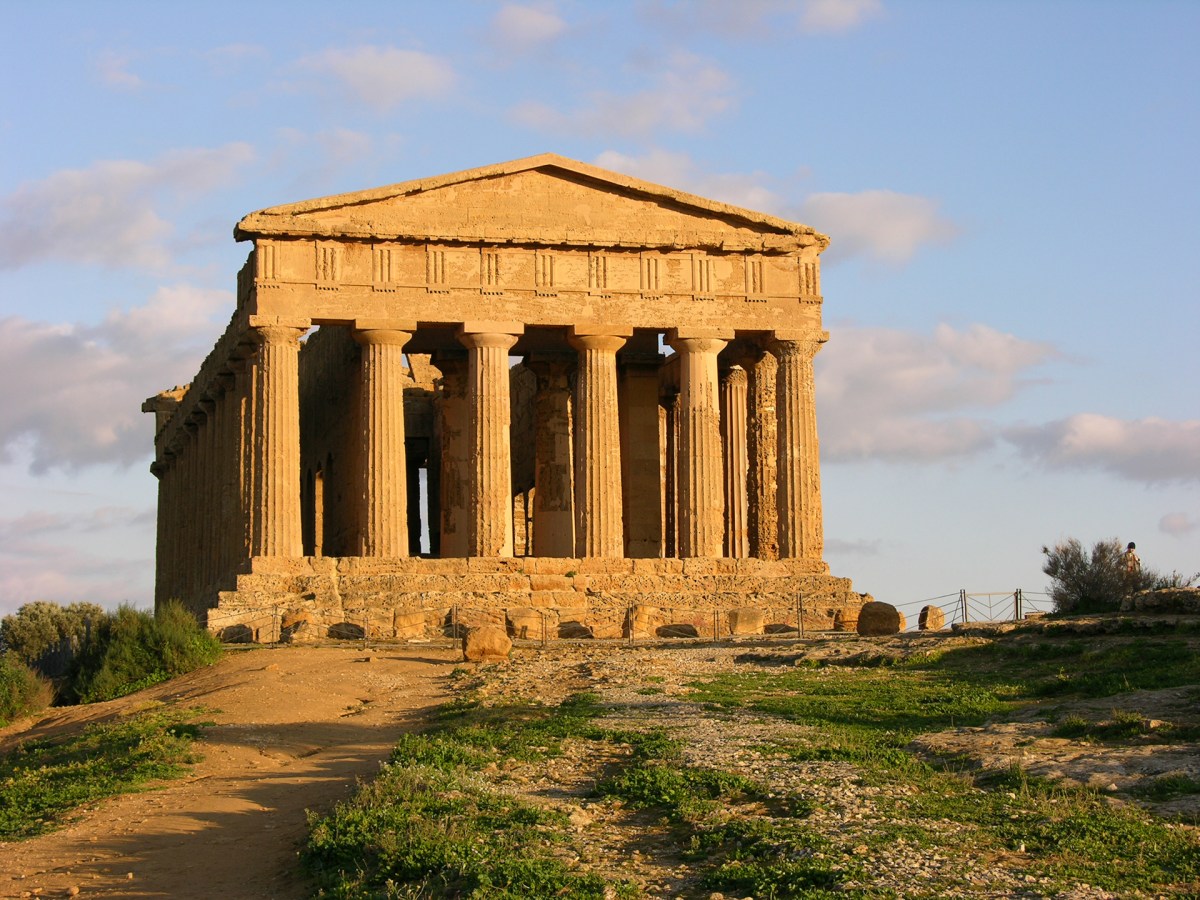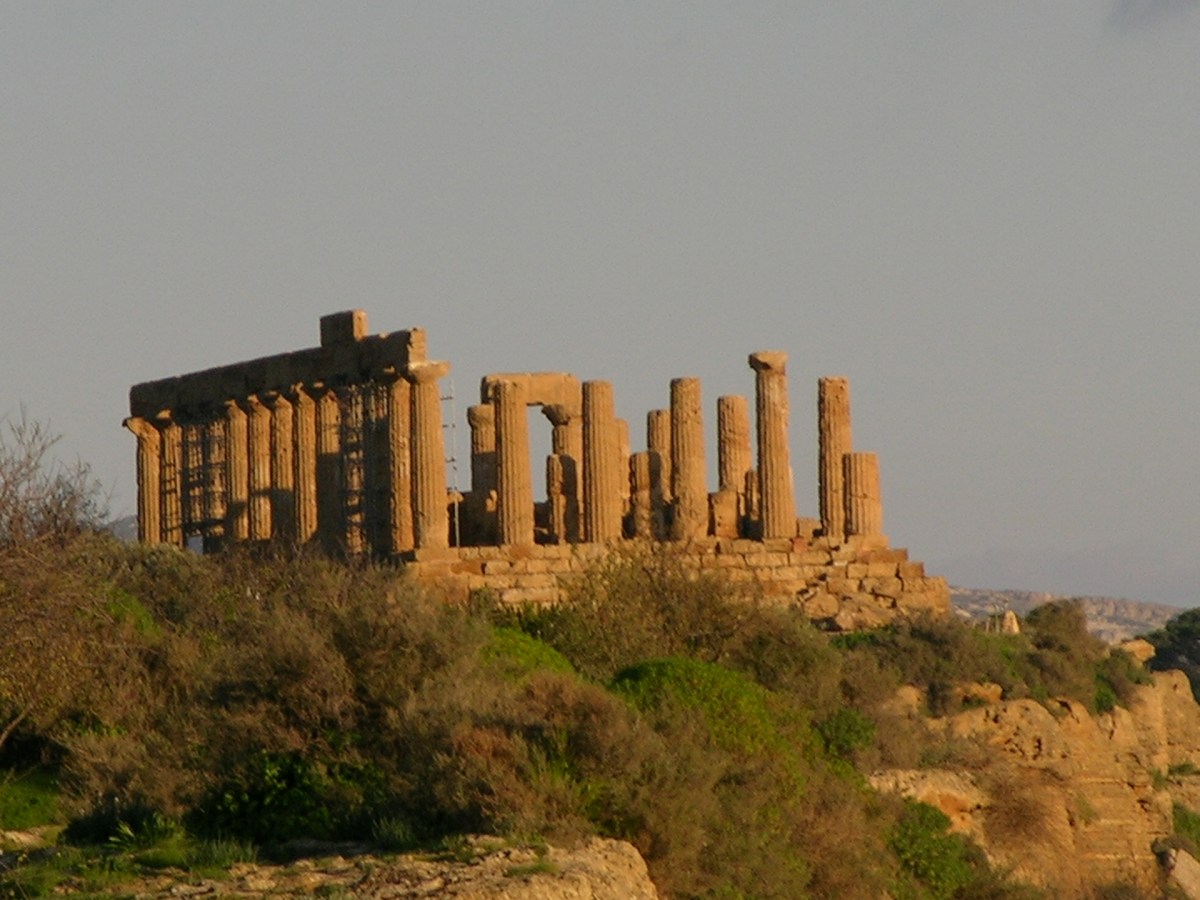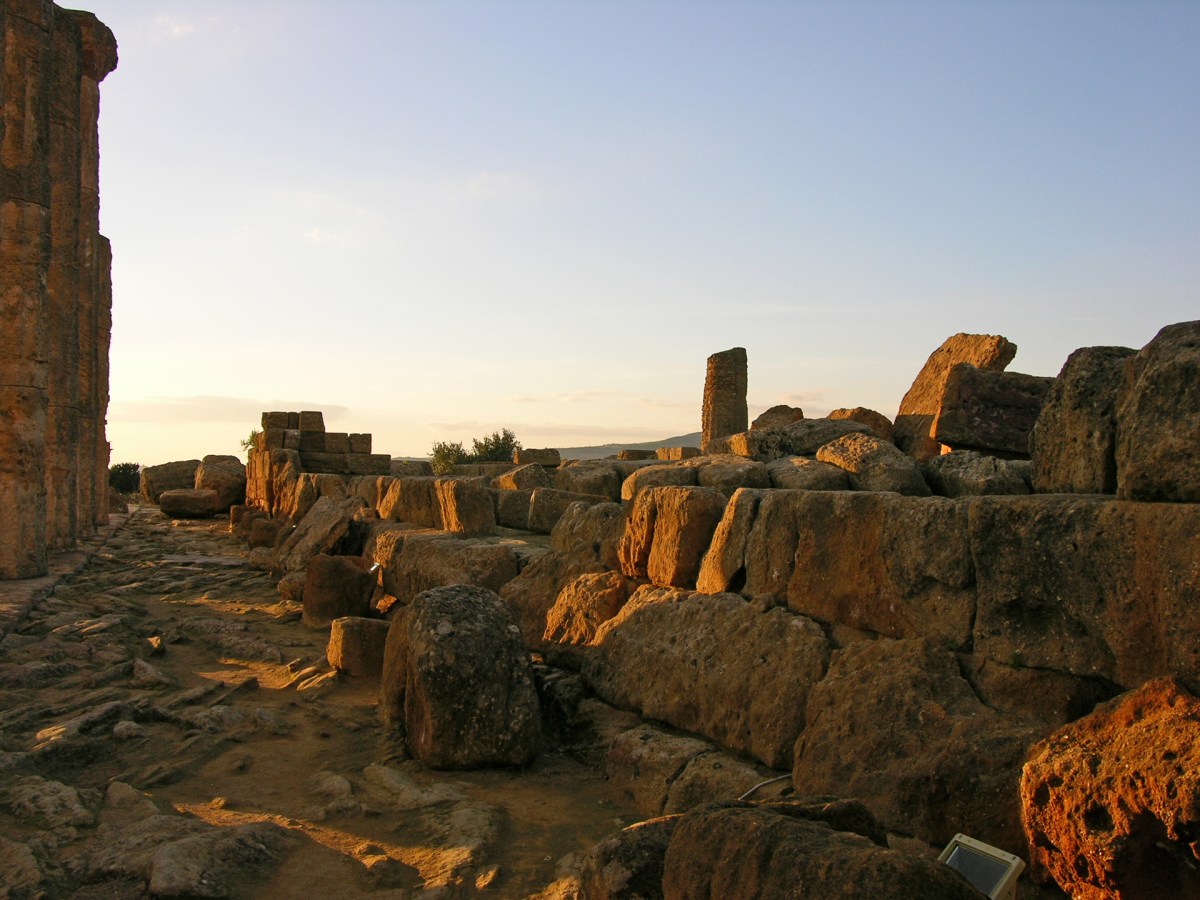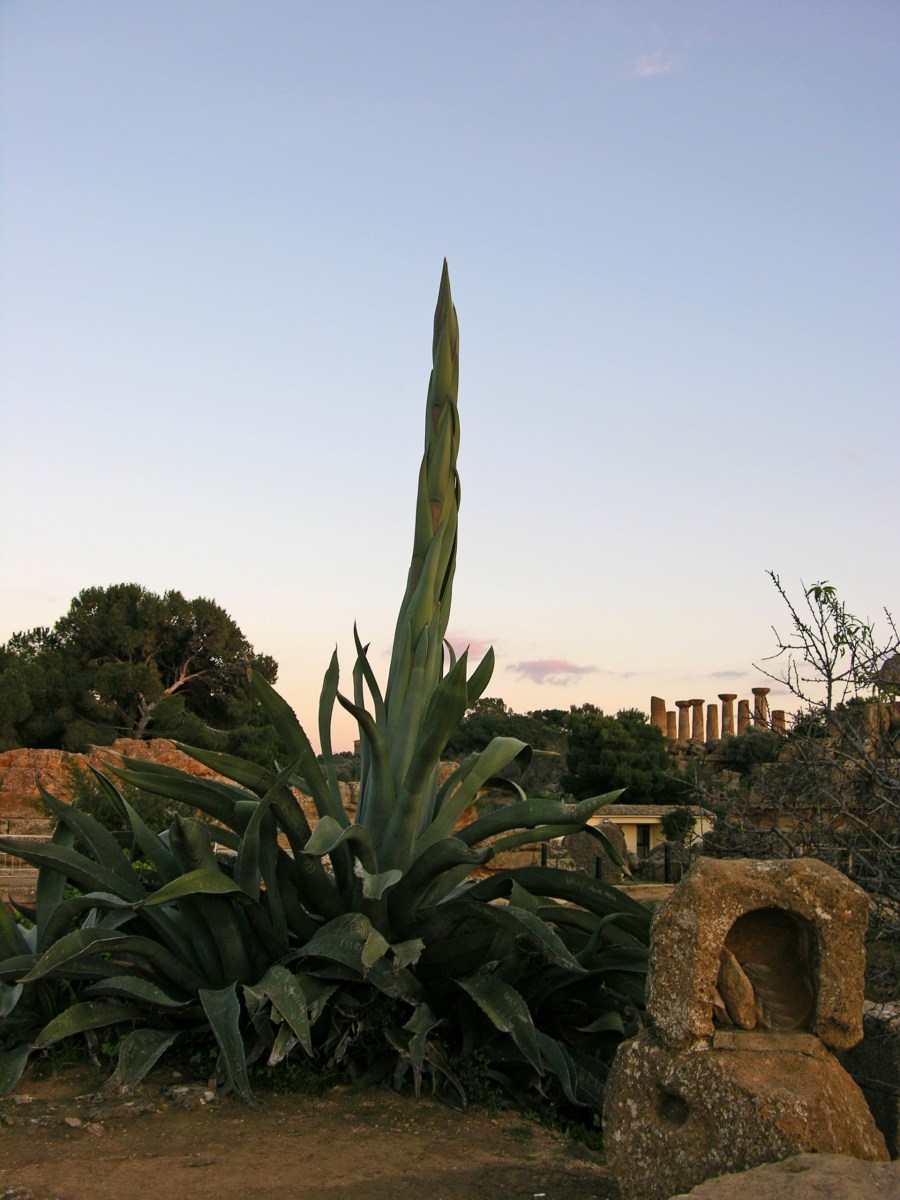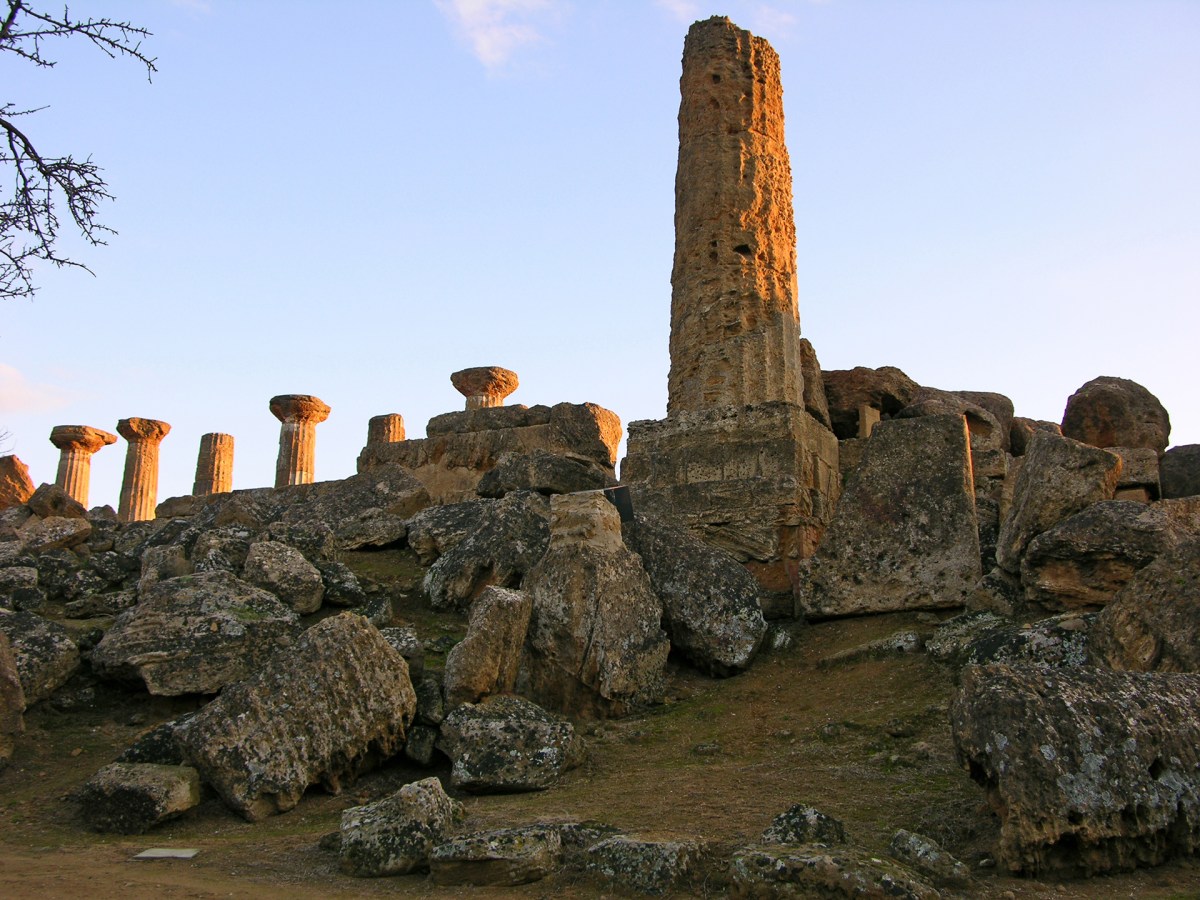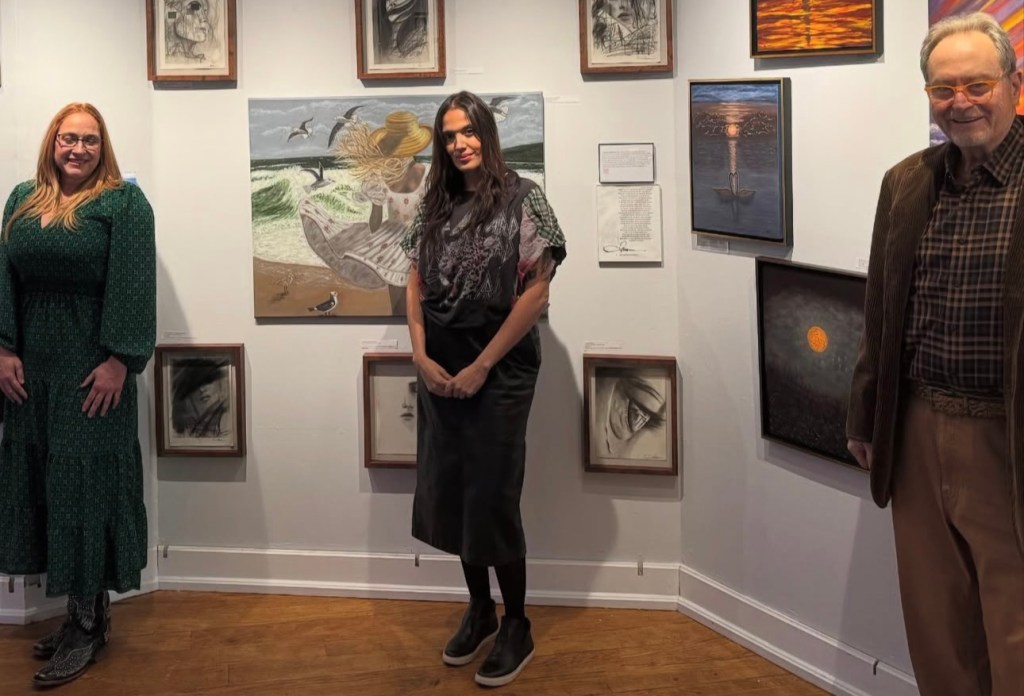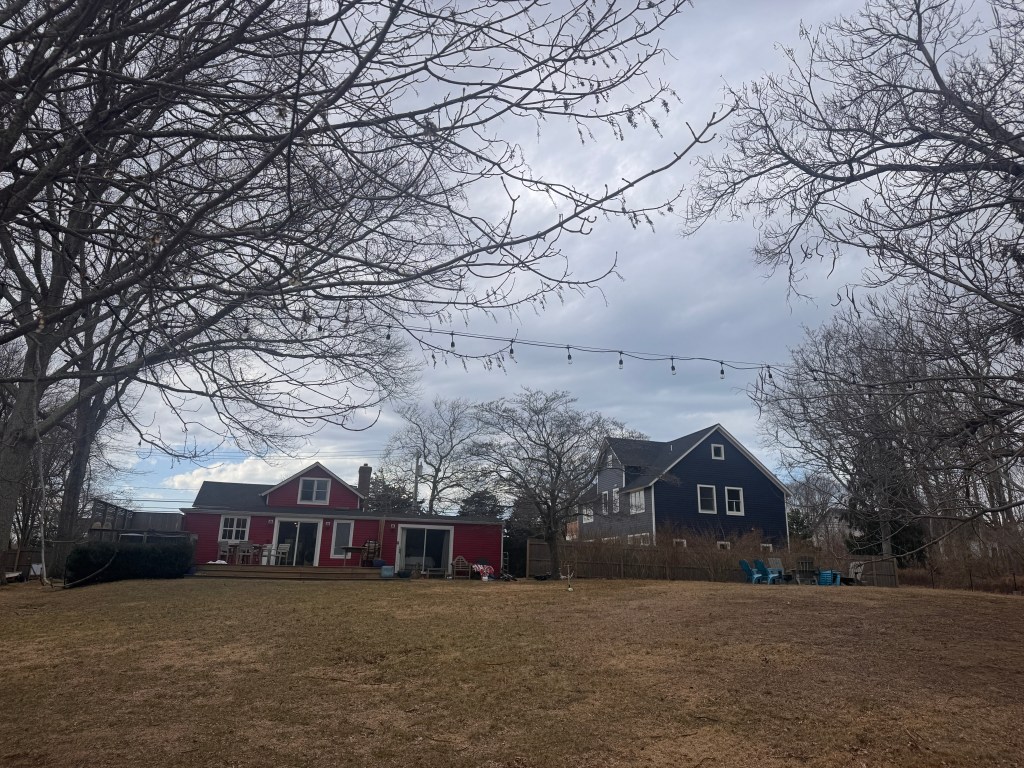The Greeks Of Sicily
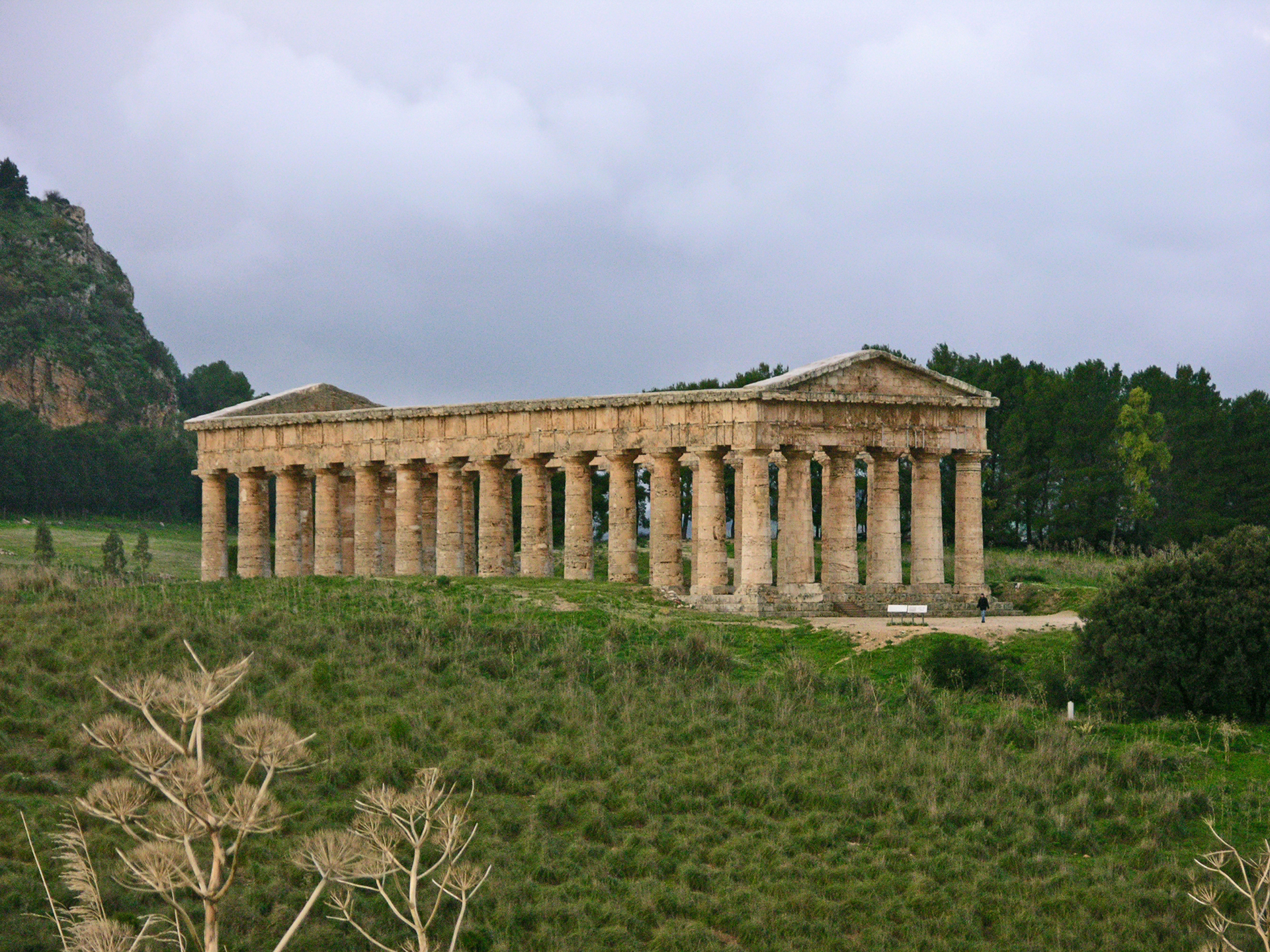
Temples, temples . . . and more temples
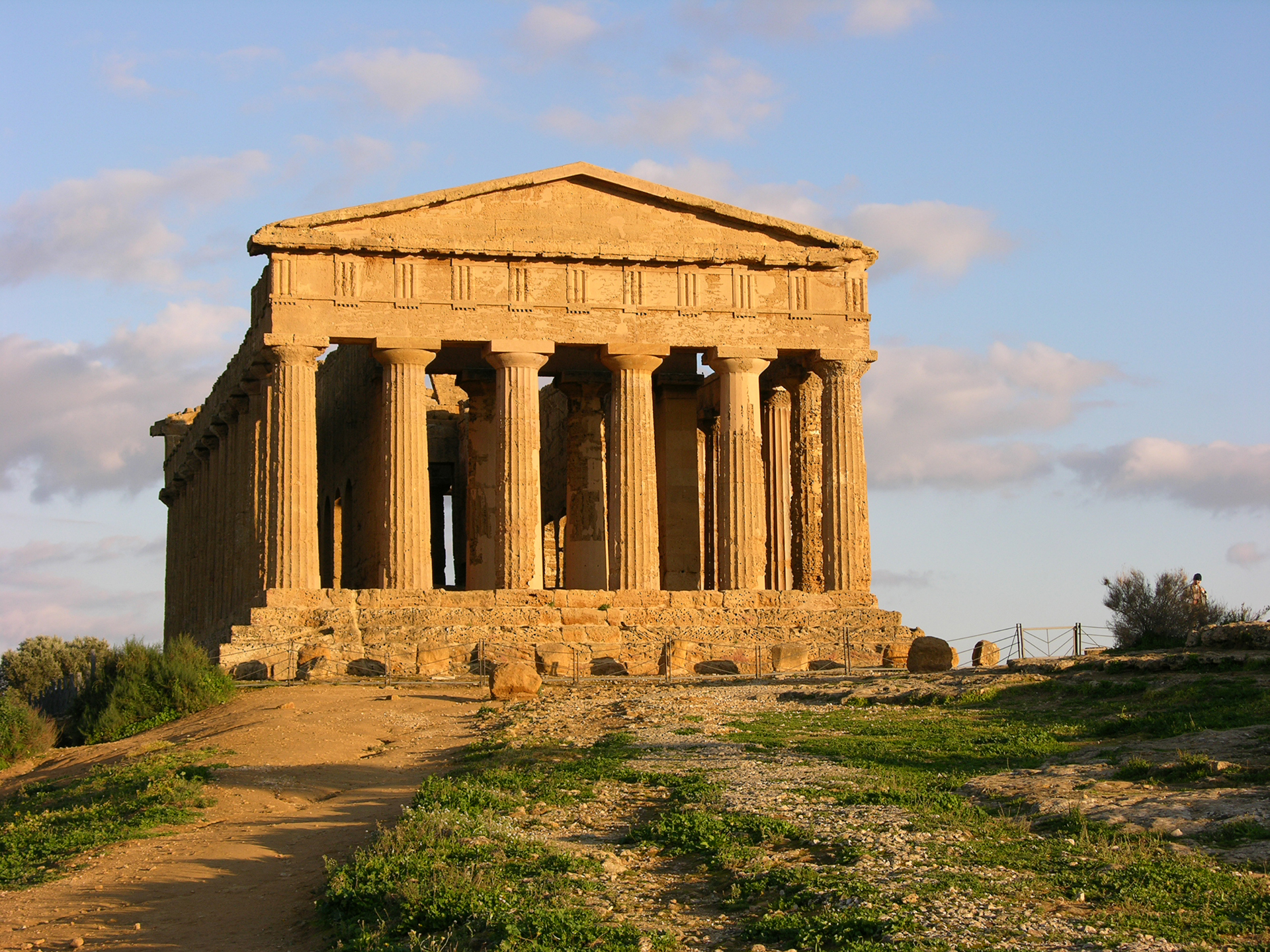
We went to Sicily for Christmas and New Year’s a few years ago. And what did we see? We did see the sea, but even more, we saw Grecian and Roman ruins.
We flew into Palermo December 23, rented a car, and immediately drove 185 miles to Modica, in the south of Sicily, where we had rented a ducal palazzo, Casa Alfieri, for a week. It was a handsome place with balconies and soaring ceilings. And, because of those amazing, lofty ceilings, it may not have been the best choice for a winter vacation — brrr — but we would love to have been there in warmer weather!
Our host had told us to be sure to let him know when we arrived in Modica, so he could guide us to the apartment — or we would NEVER have found it. He led us about four blocks past where the apartment was located, down to a narrow alley — so narrow, there were scrape marks along its sides — where we had a teensy parking space for our (fortunately) very small European car.
We were right around the corner from Modica’s main street, Corso Umberto, where we wandered through historic squares and shops. On our way back to the apartment, we bought groceries from a small corner market with abundant vegetable choices in bins lined up around the front.
Our first full day in Sicily took us to Siricusa and its vast Greek amphitheater, in Neapolis Archaeological Park. The enormous theater is still used every year in late spring for classical plays performed by the Italian Institute for Classical Drama. Besides the theater, the park is also home to an extensive museum and the amazing cave called the Ear of Dionysus. The teardrop shape of the Ear’s cavern (Orecchio di Dionisio in the original Italian) is famous for acoustic properties that amplify even the quietest of sounds, allowing them to be heard through an opening at the top, some 72 feet above ground. The park also has a smattering of Roman ruins. Quite an informative day trip! And, on our way back, we passed through a ghost town with some great vistas.
The next leg of our journey took us to the little town of Ballestrate, where a lucky double rainbow greeted us on the roof of the apartment that was our headquarters there. Right after we arrived, we headed to nearby Segesta, the site of a beautiful Greek temple. And why did we choose to visit a temple on a cloudy damp day in December? Because it was OPEN! A cautionary tale: In Sicily, don’t stay too far from the sights you most want to visit, because museums and other attractions may well be closed anywhere from 11 AM to 2 PM, or longer. Restaurants are mostly open, but temples are open from morning to night. And, on vacation, you don’t always want to rise early to be sure you arrive at a museum before 11 AM.
So . . . the Doric Temple of Segesta, built before 430 BC. If anyone needed proof that the ancients had a good eye for where to build, Segesta would belie any doubts once and for all. The temple is nearly 200 feet long and 85 feet wide, built upon four steps, with a total of 36 Doric columns. Its setting, perched on a hill, overlooking rolling green countryside and views that stretch right down to the sea, is stunning. When we arrived at this perfectly classical composition, we found it set against a gray sky illuminated by a rainbow. Pretty inspiring. Turns out, despite its classical Greek construction, it was actually built by Elymians, but word has it they intermarried with Greeks, so who knows? And the site also includes a small amphitheater and other ruins.
From that point, farms, farms, farms (including prickly pear orchards), and temples were all we saw. Plus, a short trip to Castellammare del Golfo, the Sicilian town where John’s maternal grandparents lived before they migrated to the United States. An historic little fishing port, Castellammare is in a very picturesque location, below steep mountain slopes, with a handsome curved harbor at the foot of a small headland that’s topped with a castle. It reminded us of East Hampton but the decidedly Sicilian version.
Our grandest foray to temples was Agrigento, which includes the magnificent Temple of Concordia and the so-called Valley of the Temples that lies just beyond it. A UNESCO World Heritage Site, it’s perhaps Sicily’s most famous historical attraction. This splendid archaeological park consists of seven additional temples, most named for deities, and various other remains, built between about 510 BC and 430 BC. Apart from the Temple of Ascelepius, on the banks of the Akragas river, all are situated on rocky crests south of modern-day Agrigento (not really in a valley at all). This splendid gathering definitively marks Sicily as the site of more Greek temples than are found anywhere else in the world.
